Proud Fittonia is a South American exotic, which was adapted without problems in indoor conditions and became a real favorite of flower growers. The main advantage of Fittonia is its unsurpassed foliage, the decorativeness of which is difficult to overshadow. Thanks to breeders, there were many hybrids that affect the eyes with picturesque drawings of the sheet of different shades. Find out how to care for Fittonia, and let your flower collection be replenished with another worthy copy.
Content
Fittonia, description of culture
- Fittonia plant is a grassy perennial from South America, belonging to the Acantone family. The natural habitat is swampy jungle. The plant can be met in Peru, Colombia, Bolivia.
- The plant is named after the sisters Fitton. These ladies from England wrote the book “Conversations of the Botanik”, which became the first educational accomplice in the botany.
- The family of fittonia is small. It includes only 4 types, three of which creeping and one erect.
- Her foliage is elegant and memorable. The leaves sit in pairs opposite each other on fragile shoots. Their ovoid shape with Zazubins along the edge.
- The color of the foliage of room Fittonia is different: from pale blue to dark hezumruudny. A pattern that contrasts with the base color is located on a leaf canvas. The size of the sheet is from 4 to 12 cm, depending on the type. He is matte, naked, holds on a short petiole.
- The root system of Fittonia is superficial. There is a quick rooting in full -fledged nodes.
- The only drawback of Fittony is flowering. This spectacle is practically not available at home. And if a flower stalk wakes up among the variegated foliage, this will become the highest gratitude to the flower grower for the labors. But only some species can bloom, and among hybrids - flowering Fittonia is a rarity.
- Fittonia blooms with small silver or yellow-coffee flowers. The blizzard inflorescence is low, so it is lost among the foliage of Fittonia. How the plant blooms:

Fittony does not have medicinal properties, but it does not contain toxic substances. Therefore, you can make a melting of this exot on the windowsill if you have babies or inquisitive pets in your house.
Interesting! According to the teachings of Feng Shui, Fittonia of the house is a symbol of determination, prosperity and mutual understanding. It is believed that the leaves of the plant perfectly “clean” the energy in the room after family quarrels.
Fittonia, species
- Fittonia Vershaffelt. The stalks are low up to 10 cm, creeping. Young twigs with a silver fluff, old ones with a pile of a green hue. The shape of the sheet is oval-elliptical, the leaves are large, naked, pink, dairy or light-brewed veins are present on the surface. Blooms with unsightly yellowners with flowers collected in spikelet. A popular variety of Perseus with a black-green color of leaves in a yellow-pink strip.

- Fittonia is silver -free. The species has a rich dark green foliage with elegant silver-white arrows. It is an erect bush. It has a dwarf variety Nana with miniature leaves.
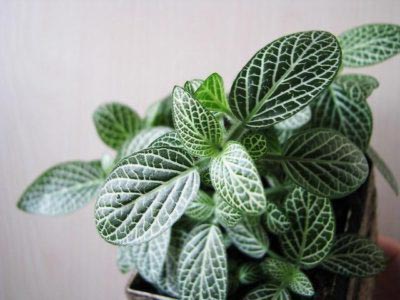
- Fittonia is giant. View with red branches up to 50 cm in length. Leaves of juicy green color with reddish stripes, about 15 cm long, with a glossy surface.

Based on these three species, beautiful hybrid forms are displayed:
- Josan is a bright variety with pastel-green leaves, painted white veins. A light green rim comes along the edge.
- White Anna-Oval leaves of a pale green tone are decorated with bright white veins.
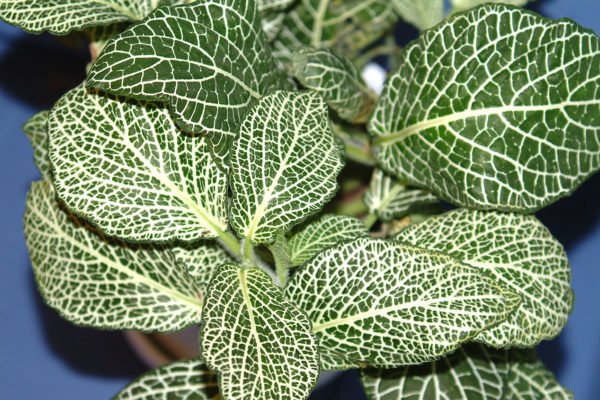
- Skeleton-yellow-green greens contrasts with bright pink stripes.

- White is oval foliage, the main color is a dark emerald, with thick and thick veins.
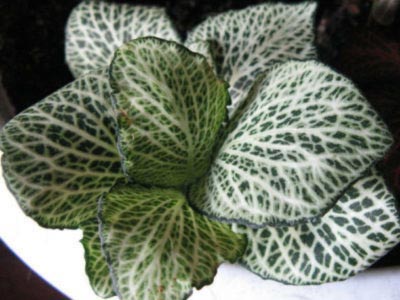
Note! Often you can see a variety of Fittonia Gemeng. This is nothing but a mix of different varieties in one pot.
Fittonia, care of the house
In order to continuously contemplate the beauty of Fittonia, it is enough to observe the rules for its cultivation and care, as well as listen to the advice of experienced flower growers.
Fittonia at home, temperature and lighting
- The presented flower is extremely heat -loving. In the summer, the temperature should not fall below +22 ° C, and in winter - below +20 ° C. With a borderline decrease in temperature (below +18 ° C), Fittony drops the foliage.
- It is necessary to exclude drafts and temperature fluctuations. Do not take a flowerpot with a flower on an open balcony or terrace, where the indicators of the air temperature day and night can vary greatly.
- In winter, it is not recommended to keep fittonia near heating devices, otherwise its leaves will be fired.
- Fittonia will be correctly placed on the Western windowsill, where it will receive plenty of light, but will not be exposed to direct rays of the sun, which are destructive for it.
- Fittonia at home tolerates shading well. But in winter, she still needs artificial lighting to maintain the brightness of the leaves.

Required humidity and watering fittonia at home
- This plant comes from wet forests, so it needs high humidity. In dry and hot weather, the flower is sprayed twice a day. Only filtered water at room temperature is used.
- In winter, air is moistened with wet pebbles or expanded clay, the pallet with which is placed near heating devices. Or turn on the automatic humidifier.
- During the period of active development, from March to October, Fittonia watering is carried out daily, preventing the soil to dry out.
- In no case should the earthen lump be completely dried. Wasoning the flowerpot, lie down the water until it starts to flow into the pallet. Be sure to drain the remains so that the putrefactive flora does not multiply.
- From the end of autumn to the arrival of spring, watering is half reduced. But then they make sure that the soil does not remain completely dry, otherwise the leaves will fall.
- Watering through the pallet is not allowed. In this method, the flower will not receive moisture and begin to die.
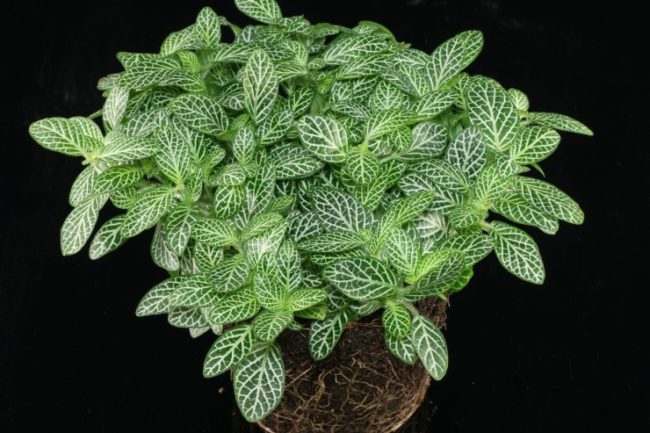
Fittonni top dressing at home
- Starting in spring, when Fittonia begins to actively develop, top dressing is carried out every 12 days. In winter, the plant does not need to fertilize.
- Fittony does not need abundant introduction of nutrients. Therefore, the required dose for the flower, which is indicated on the package, is desirable to halve.
- It is most convenient to feed Fittonia with any liquid fertilizer for indoor crops.
Fittonia pruning at home
- From time to time, younger shoots are poured by a quarter. This pushes Fittonia to the active formation of a thick bush. And the cuttings obtained during trimming can be rooted.
- If the plant was bloomed, flower growers are advised to cut flower stalks in a timely manner. They take too much strength from Fittonia, and it becomes defenseless before pests.

Fittonia, planting and transplanting procedure at home
- Fittony is transplanted every three years. These are the necessary measures, since the plant quickly loses its decorative appearance-the lower part is exposed due to the fall of old leaves. Planting work is carried out in the spring.
- If you have just acquired Fittonia, it is necessary to carry out an unscheduled transplant. The fact is that the store flower is most likely planted in universal soil, which categorically does not suit it.
- For Fittonia, the pot is selected low and moderately voluminous. Since its rhizome lies in the upper layer of the soil, it is better to use ceramic bowls. There must be a hole for the outflow of water, while the drainage is still laid in the pot - pebbles, expanded clay, and pieces of brick.
- For fittonia, a substrate for violets or azale is suitable. But you can use home -made soil. The basic requirements for it are increased aeration, lightness, moisture permeability.
- For the preparation of soil, two parts of peat, coniferous soil, garden soil and part of coarse sand are used.
When everything is ready for Fittonia, the transplant is carried out as follows:
- Drainage is poured into the pot, then the soil ball.
- The plant, along with the earthen lump, is extracted from the old container and shifted into a new pot.
- Particular attention is paid to roots - they are fragile and easily damaged, and this must be avoided in every possible way.
- Then the rhizome is covered with earth and watering is carried out until the soil is completely wet.
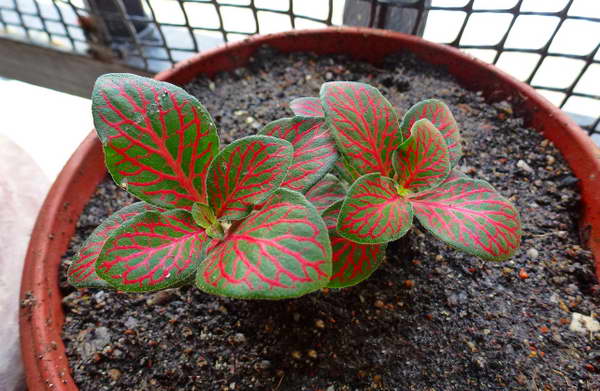
Fittonia, reproduction at home
The sophistication and beauty of Fittony encourages flower growers to its reproduction. This can be done using cuttings, division of the bush, layering.
Cherging of Fittonia
- Conduct the cuttings of Fittonia in the spring or in the middle of summer.
- The apical shoots are harvested. They should have 4-5 leaves. The length of the handle is 7-9 cm.
- The stalk is deepened into wet sand (you can mix it with peat).
- Then the stalk is covered with a jar or a transparent cap made of plastic.
- Or leave the stalk in the water until the root system appears. Water should be no more than 2/3 of the container. It is also necessary to create a greenhouse, as when rooting in the ground.
- The stalk is constantly sprayed, and after the appearance of the roots, they are transplanted into a permanent pot with special soil.

Division of Fittonia bush
- The most set method for obtaining a new bush of Fittonia is to divide an adult plant.
- In the spring, during a planned transplant, the rhizome along with the aboveground part is cut. In this case, avoid damage to the roots.
- Then the obtained bushes are transplanted into separate pots, watered and ensured by regular care.
Reproduction of Fittonia with layering
This method requires a certain experience:
- You need to choose a healthy escape, cut off all the leaves.
- Pull the stalk into the soil in the same pot.
- Or prepare another container with light soil, which holds moisture well and place it near a pot with Fittonia. Pull the stalk into the neighboring pot.
- When the escape starts the roots, it must be separated from the maternal plant.

Fittonia flower, growing errors at home
Fittonia, pests
The plant is often affected by insects:
- The powdery worm-leaves a dirty white plaque on the foliage, which resembles lumps of cotton wool. Treatment with soapy solution, Acture, CALIPSO will help. Processing must be repeated in two weeks.
- Shield-recognized by gray-brown convex spots on the lower part of the sheet. Soon the leaves turn yellow and die. As a treatment, I use foam from green potassium soap, phosbezide, metaphos.
- Trips - insects bleach leaves, form holes on them. Shoots and foliage are gradually deformed, die off. Inta-Vira, Aktelik, Confidor will help to cure fittonia. It is also necessary to transplant the plant into new soil.
- A web of a tick - exhausts the leaves, from which they are twisted, dry, fall. With damage to the plant on the leaves, beige points and cobwebs are noticeable. You can use an infusion of garlic or actophyte, Apollo.

Fittonia in the photo
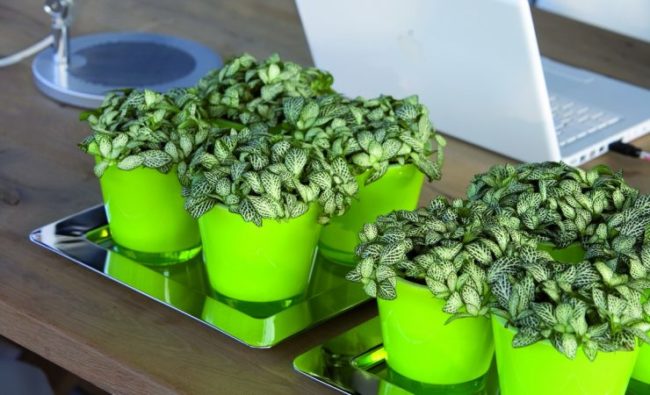
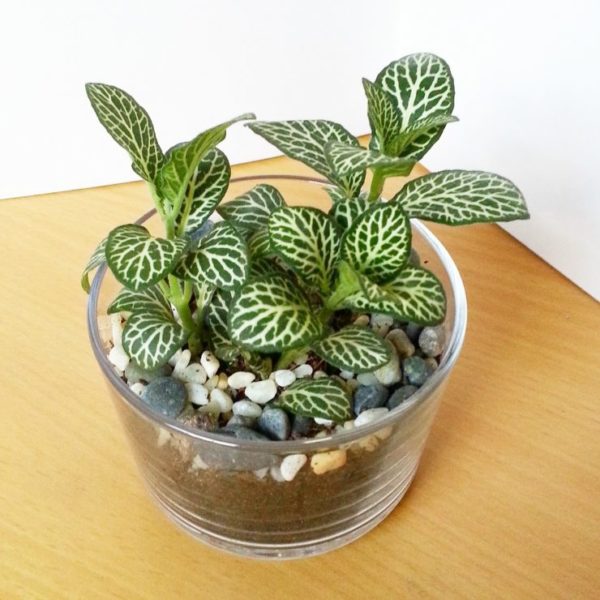
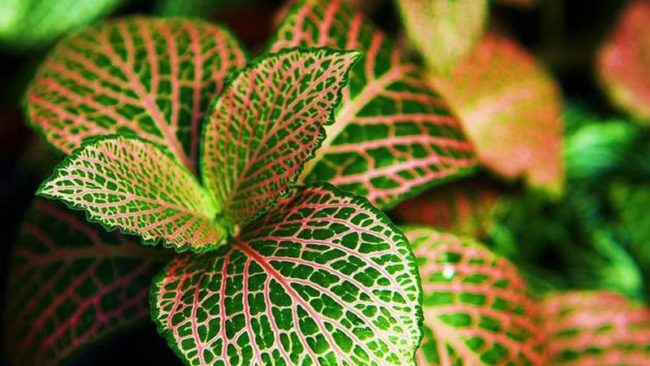











Comments
a couple of years ago, there was no side of metrogils from the same problem, there were no side effects ...
I’m not a fan of peeling at all, it saves from acne of metrogil, it also smoothes it ...
Great article! ...
I take the second course of the Capsules Climafite 911. The tides went very quickly. It became calmer, irritability went away and I sleep well ...
i also noticed - it is worth nervous, everything immediately affects the face. Therefore, I try to avoid conflicts and unpleasant people. Of the creams, I like Miaflow from wrinkles - smoothes not only small wrinkles ...